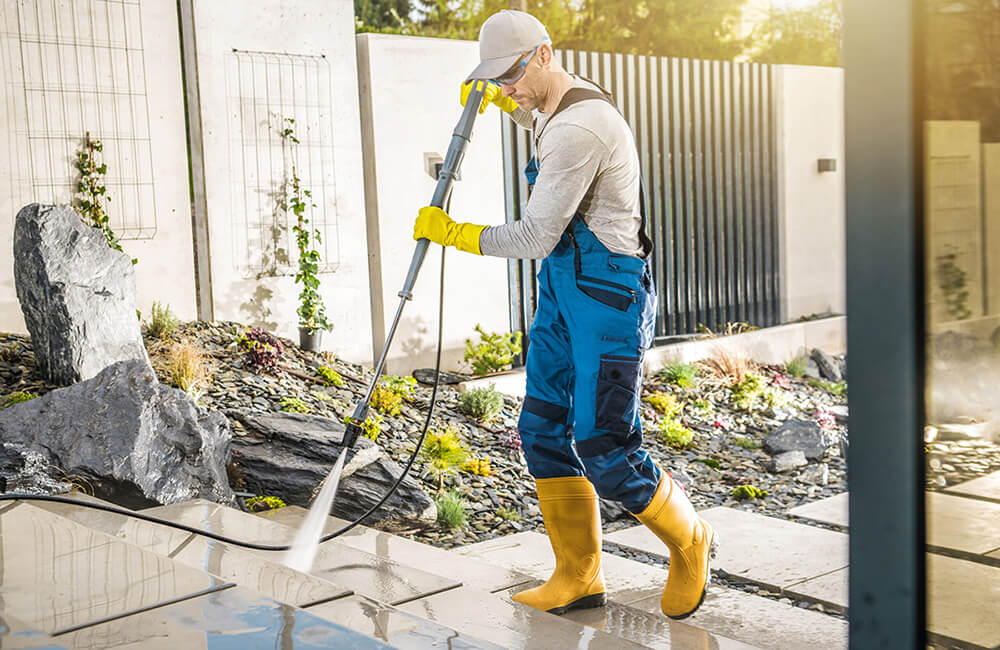Revitalize Your Home: The Ultimate Guide to Stress Laundering
Stress cleaning is a vital tool for house owners aiming to bring back the visual appeal and durability of their residential or commercial properties. To browse these complexities and accomplish optimum results, it is necessary to explore the essential facets of pressure washing, consisting of functional advice on making certain and dealing with typical discolorations safety throughout the process.
Comprehending Stress Laundering
Stress washing is a powerful cleaning technique that makes use of high-pressure water spray to get rid of dirt, grime, mold, and other pollutants from numerous surface areas. This technique is particularly efficient on difficult surface areas like driveways, pathways, decks, and home siding, where traditional cleaning methods may fall short. By employing specific devices that produces high-pressure streams of water, stress washing can permeate deeply right into surface areas, successfully removing and cleaning away persistent particles.
The process is not only efficient but also environmentally friendly, as it commonly depends exclusively on water, minimizing the demand for rough chemical cleansers. Furthermore, stress washing can enhance the aesthetic allure of residential or commercial properties, maintaining their value and lengthening the life-span of surface areas by avoiding wear and tear triggered by pollutants.

Picking the Right Devices
Picking the appropriate devices is critical for achieving ideal results in pressure washing. Gas systems, on the various other hand, offer higher stress and circulation prices, making them perfect for larger tasks such as cleansing driveways or home siding.
Following, consider the pressure score, determined in extra pounds per square inch (PSI) For light-duty jobs, a stress washing machine with 1,300 to 1,600 PSI suffices, while medium-duty jobs usually call for 1,600 to 2,500 PSI. Sturdy jobs might demand machines exceeding 2,500 PSI.
Additionally, the flow rate, measured in gallons per minute (GPM), influences cleaning efficiency (Pressure Washing Lockhart). A higher GPM enables quicker cleaning but may require much more powerful equipment
Techniques for Effective Cleaning

The technique of overlapping strokes is essential for even insurance coverage. Begin with the leading and work your method down, ensuring that each pass a little overlaps the previous one. This prevents spotting and ensures a complete clean. Furthermore, maintaining a constant Clicking Here range from the surface, normally 12 to 18 inches, permits efficient application without creating harm.
Making use of the correct nozzle is likewise crucial. A wide-angle nozzle is perfect for larger locations, while a slim nozzle can target stubborn dirt or gunk. Making get more use of a sweeping activity instead than a fixed spray aids to prevent concentrated areas of pressure, which could lead to surface damage.

Taking On Common Spots
When it pertains to keeping the look of exterior surface areas, resolving usual discolorations properly is crucial for prolonging their lifespan and enhancing curb appeal. Numerous surfaces, consisting of timber, plastic, and concrete, can build up stains from organic products, oils, and ecological contaminants, requiring a targeted technique.
For oil stains, a combination of degreasers and stress washing can yield excellent outcomes. Use the degreaser to the tarnished location, enabling it to penetrate before making use of a stress washer to get rid of the deposit. Organic spots, such as mildew or algae, often call for a service containing bleach or a dedicated mold and mildew cleaner, followed by stress washing to recover the surface area's original appearance.
Rust discolorations, normally discovered on steel surfaces, may demand specialized corrosion cleaners. Use the item and scrub the area prior to pressure cleaning to eliminate any type of lingering staining. It is very important to examine any type of cleaning option go to my site on a small, low-profile area initially to avoid damages.
Safety Tips and Finest Practices
Ensuring security while stress washing is extremely important, as the high-pressure water can position substantial risks otherwise handled properly. To shield yourself and others, constantly put on suitable personal protective devices (PPE), consisting of safety goggles, handwear covers, and sturdy footwear. This equipment will protect you from flying particles and the potential for injury.
Before beginning, inspect the pressure washer for any kind of leakages or damaged parts. Acquaint on your own with the equipment's manual to comprehend its procedure and safety and security features. Furthermore, make certain the location you are working in is devoid of challenges which any kind of electric connections are safe from water exposure.
When operating the stress washing machine, keep a secure range from surface areas and avoid aiming the nozzle at people, animals, or vulnerable things. Make use of the proper nozzle for the job, as various nozzles generate differing spray patterns and stress degrees. Lastly, bear in mind your surroundings: secure loose items, watch for electrical lines, and avoid working in damp problems that might bring about drops or slips.
Final Thought
In verdict, pressure washing offers as a crucial tool for homeowners looking for to boost property looks and longevity. By understanding the ins and outs of equipment option, effective cleansing strategies, and typical discolor removal, the potential for renewing one's home ends up being noticeable.
Pressure cleaning is a powerful cleansing approach that uses high-pressure water spray to get rid of dust, grime, mold and mildew, and various other contaminants from different surface areas. By using specialized devices that creates high-pressure streams of water, pressure washing can permeate deeply right into surface areas, efficiently removing and cleaning away persistent debris.
Nevertheless, it is essential to understand that pressure cleaning calls for a certain level of skill and understanding to stay clear of destructive surface areas. Softer materials like wood or painted surfaces require a reduced stress setting to avoid damage, whereas concrete or block surface areas can withstand higher stress degrees.
Organic discolorations, such as mildew or algae, typically require an option having bleach or a devoted mold cleaner, complied with by stress cleaning to recover the surface area's initial appearance. - Pressure Washing Lockhart